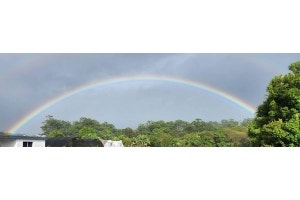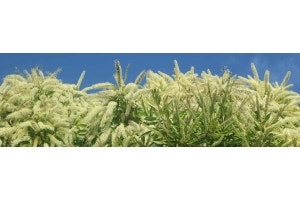
Here at Australian Plants Online we frequently get asked "what are the best plants for my garden in Central Coast/Far North Queensland/Inner West Sydney/etc" - and we have a standard response:
You know your own garden better than us.
If we suggested plants for Queensland, they would have to thrive in climates ranging from the hot dry dusty outback of Mount Isa, to the mild coastal urban hills of Mount Coot-tha, to the steamy rain-soaked tropics of Mount Bartle Frere. The same goes for all the other states - Australia is a continent as well as a country, and has multiple climates and soil conditions within the same state.
There are three foolproof ways to find the best plants for your state, and your garden:
Wikipedia lists over 140 Australian botanic gardens alone, so you've lots of choice. You could visit one every weekend for almost three years!Go along to your nearest botanic garden or public park and see what's planted there. Take a notebook so you can record any names, and a phone to snap reference photos. Watch out for charity open days too, when you can sticky beak in local private gardens for a small entrance fee.
The homeowners who garden these plots are often extremely knowledgeable about what they grow, and happy to share that knowledge.
1. a list of what grows well locally in your neighbourhood;
2. a list of what you have seen in local gardens and parks;
3. and a list of the details of your own garden : the soil, climate, temperature etc.
1. Look at neighbours' gardens.
- What's flourishing there?
- What's looking under the weather, even in an otherwise-lush garden?
- What's always in flower, or clothed in healthy foliage?
2. Visit local gardens.
Every state has a botanic garden, public park, or large green space open to everyone, and often free to visit.Wikipedia lists over 140 Australian botanic gardens alone, so you've lots of choice. You could visit one every weekend for almost three years!Go along to your nearest botanic garden or public park and see what's planted there. Take a notebook so you can record any names, and a phone to snap reference photos. Watch out for charity open days too, when you can sticky beak in local private gardens for a small entrance fee.
The homeowners who garden these plots are often extremely knowledgeable about what they grow, and happy to share that knowledge.
3. Look at your own garden.
- Notice where the sunlight falls each day, and for how long.
- Record maximum and minimum temperatures.
- Are there any pockets of frost?
- Does it get battered by wind? From which direction?
- What is your soil like - silty, rocky, rich loam, or red dust? Acid or alkaline?
- Free-draining, always dry, or boggy in patches?
Using this Info.
Now you have three lists:1. a list of what grows well locally in your neighbourhood;
2. a list of what you have seen in local gardens and parks;
3. and a list of the details of your own garden : the soil, climate, temperature etc.
Use the filters on the website - at the left on desktop, at the bottom of the screen on mobile - to filter your plant lists by soil type, climate, light and water needs to suit your own garden conditions. Then you can grow with confidence, and with success, because you know your plants will be happy in their new home!


















